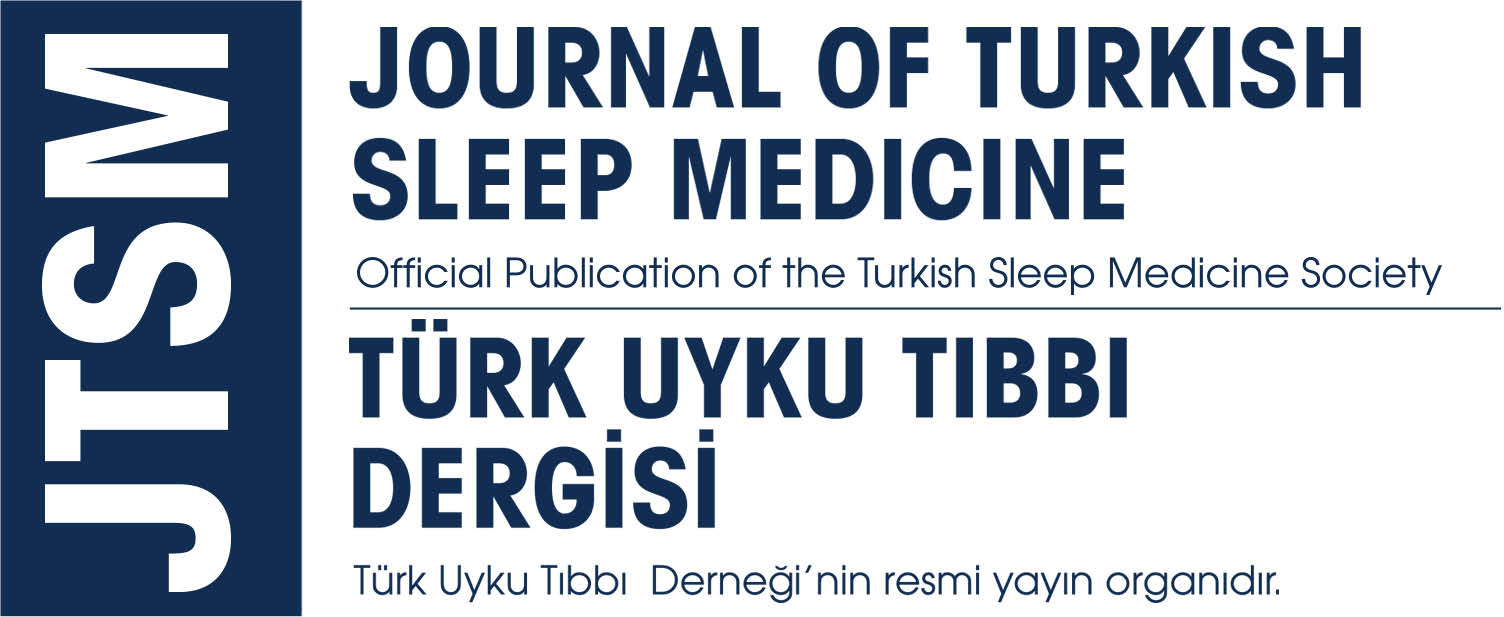Editorial
We are happy to present the second issue of Journal of Turkish Sleep Medicine (Türk Uyku Tıbbı Dergisi).
In this issue, Dr. Gülçin Benbir and Dr. Derya Karadeniz present the review of “Obstructive Sleep Apnea Syndrome in Pediatric Age Group”. Sleep related disoders is not amongst the subjects, which are adequately acknowledged and investigated. We believe that this review, which suggests that this condition complicated with cardiovascular morbidity due to increased nocturnal sympathetic activity, should be kept in mind in the pediatric age group, and while positive airway pressure therapy constitutes first-line therapy, surgical intervention is more commonly suggested in the treatment of OSAS in pediatric age group as compared to adult age group.
Dr. Feray Karaali Savrun et al., show the findings of palatal muscle EMG motor unit potentials in 8 healthy volunteer men in the manuscript titled “Multi-MUP Analysis of Palatal Muscles in Healthy Men”. In their investigation, both the body mass index and neck circumference, which are associated with obstructive sleep apnea were positively correlated with the number of phases of uvular muscle. The authors suggest that multi-MUP analysis of palatal muscles which play an important role in the patency of upper airway might increase the sensitivity and specificity of palatal electromyography. Testing the study findings with further large scale studies including the patient groups will enhance the knowledge related to the pathophysiology of sleep apnea.
Dr. Kezban Aslan et al., in the manuscript “The Role of Cardiac Repolarization Index for Sudden Cardiac Death Risk in Patients with Obstructive Sleep Apnea Syndrome without any Systemic Disease” investigated the association between obstructive sleep apnea syndrome and cardiac repolarization index, which is a known risk factor for sudden cardiac death. In the patients excluded with systemic disease like hypertension and diabetes which are related to sudden cardiac death, correlation was shown between cardiac repolarization index (QTD) and apnea-hypopnea index (AHI). This investigation, which revealed similar findings to the previous studies on this subject provided important evidence for the cardiovascular consequences of obstructive sleep apnea syndrome.
In their article titled “The Influence of the Treatment of Obstructive Sleep Apnea Syndrome on Depression, Anxiety, and Quality of Life” Dr. Seifi Memetali et al., investigated the prevalence of major depression and anxiety disorders in the obstructive sleep apnea syndrome with a psychiatric interview. Significant improvement was observed in the major depression and anxiety disorders and assessment of quality of life after one month therapy of obstructive sleep apnea syndrome. This investigation revealed that obstructive sleep apnea syndrome might coexist with major depression particularly drug resistant type and anxiety disorders, and treatment of obstructive sleep apnea syndrome could be beneficial for these diseases and quality of life.
Dr. Deniz Yerdelen et al., in the article titled “Narcolepsy Syndrome in a Patient with Multiple Sclerosis” describe and discuss a case report of a patient followed with the diagnosis of multiple sclerosis, which is amongst the etiology of secondary narcolepsy syndrome. The authors inform that narcolepsy syndrome could develop due to the hypothalamic lesions in MS, which was not the case for their patient and give the suggestion that a shared autoimmune mechanism of these two diseases related to HLA DR2 antigens could be possible.
In the case presentation titled “Sleep-Related Eating Disorder (SRED) in a Patient Admitted with Weight Gain Due to Eating Periods During Sleep” Dr. Selda Korkmaz and Dr. Murat Aksu discuss this eating disorder characterized by changes in the consciousness (involuntary) in the episodes of eating strange materials for food. The patient complained of nocturnal eating attacks and weight gain during the last two years and received the diagnosis upon an eating attack during the polysomnography recording. The authors state the importance of assessing other sleep disorders and particularly use of hypnotic and sedative drugs in the investigation of this condition which should be kept in mind in the differential diagnosis of eating disorders.
Hope to meet in the third issue, have a good time reading.
With best regards.
Ahmet U. DemirChief EditorOn behalf of Turkish Sleep Medicine Societyand Editorial Board



